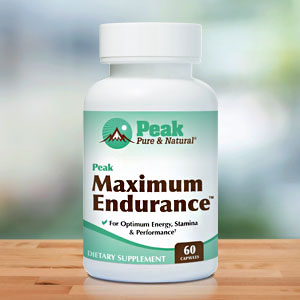Get Easy Health Digest™ in your inbox and don’t miss a thing when you subscribe today. Plus, get the free bonus report, Mother Nature’s Tips, Tricks and Remedies for Cholesterol, Blood Pressure & Blood Sugar as my way of saying welcome to the community!
How to slash your risk of AFib by 60 percent

Atrial fibrillation is the most common type of arrhythmia — or irregular heartbeat. Chances are, if you don’t have it, you know someone who does.
If that person is a close family member, your risk for AFib could be 30 percent higher.
But even if it doesn’t run in the family, the risk of developing AFIB increases with age, particularly after 65. After age 80, 1 in 10 have the condition.
In AFib, the heart’s upper two chambers beat rapidly and irregularly. If not treated, it’s the leading cardiac cause of stroke and can also lead to heart failure.
But you’re not powerless to reduce the risk of developing AFib…
Lifestyle factors can take it down — and one thing in particular can slash that risk by more than half.
A little exercise can slash your risk for AFib
Past studies have determined that regular exercise could reduce the risk of developing AFib. However, there was a consistent problem with those older studies…
They replied on self-reported data. In other words, study participants shared estimates about their activity levels, which often turned out to be inaccurate.
So before Researchers at NYU Langone Health decided to dig deeper into the relationship between AFib and exercise, they first sought to improve the way their data was gathered. They took advantage of fitting 6,086 American men and women with a fitness tracker and logged their data for an entire year.
The results of their study showed participants who averaged between 2.5 and 5 hours of exercise per week, the minimum amount recommended by the American Heart Association, had a 60 percent reduced risk of developing AFib. Those who averaged greater than 5 hours of exercise per week showed a slightly greater risk reduction of 65 percent.
Interestingly, even modest amounts of moderate-to-vigorous exercise were associated with reduced risk. The researchers classified moderate-to-vigorous exercise as anything from taking a brisk walk or housecleaning to swimming laps or jogging.
“Our findings make clear that you do not need to start running marathons to help prevent atrial fibrillation and other forms of heart disease,” says preventive cardiologist Dr. Sean Heffron, an NYU Grossman School of Medicine professor and the study’s senior author. “Just keeping moderately active can, over time, add up to major benefits for maintaining a healthy heart.”
Dr. Souptik Barua, a NYU Grossman School of Medicine professor, says the study was not designed to determine whether exercise alone directly reduced AFib risk, nor to detect how that might happen or what other factors (such as income or educational status) might be at play in the reduced risk. However, he adds, the connection between exercise and the development of AFib in study participants was strong.
The wrong exercise can raise your risk
Exercise is a lifestyle factor that’s often recommended to keep the heart healthy.
In the case of AFib, The ACTIVE-AF trial demonstrated that some people already diagnosed with the condition can control their arrhythmia through physical activity.
Of course, if you have existing conditions and are under a doctor’s care, it’s always a good idea to consult them before starting an exercise regimen.
And if just getting started, take it slow, easy and steady, then build up to what feels best. But exercise caution when selecting what type of exercise to engage in…
Research has shown that high-intensity, extreme endurance activities like marathons or triathlons can raise your risk of AFib, especially if it’s your first time participating in such an event.
Eventually, you may want to try adding a strength training workout a couple of times a week. According to one study, having a strong grip strength lowers the risk of AFib by 46 percent compared to those with weak grips.
Finally, you’ll want to stop exercising immediately if you experience any pain, extreme shortness of breath or exhaustion. Talk with your doctor before resuming your workouts; they may need to check your heart function first.
Editor’s note: There are perfectly safe and natural ways to decrease your risk of blood clots including the 25-cent vitamin, the nutrient that acts as a natural blood thinner and the powerful herb that helps clear plaque. To discover these and other secrets of long-lived hearts, click here for Hushed Up Natural Heart Cures and Common Misconceptions of Popular Heart Treatments!
Sources:
While more is better, even moderate amounts of exercise may reduce risk for common heart condition — EurekAlert!
Heart Arrhythmia Do’s and Don’ts — Penn Medicine














